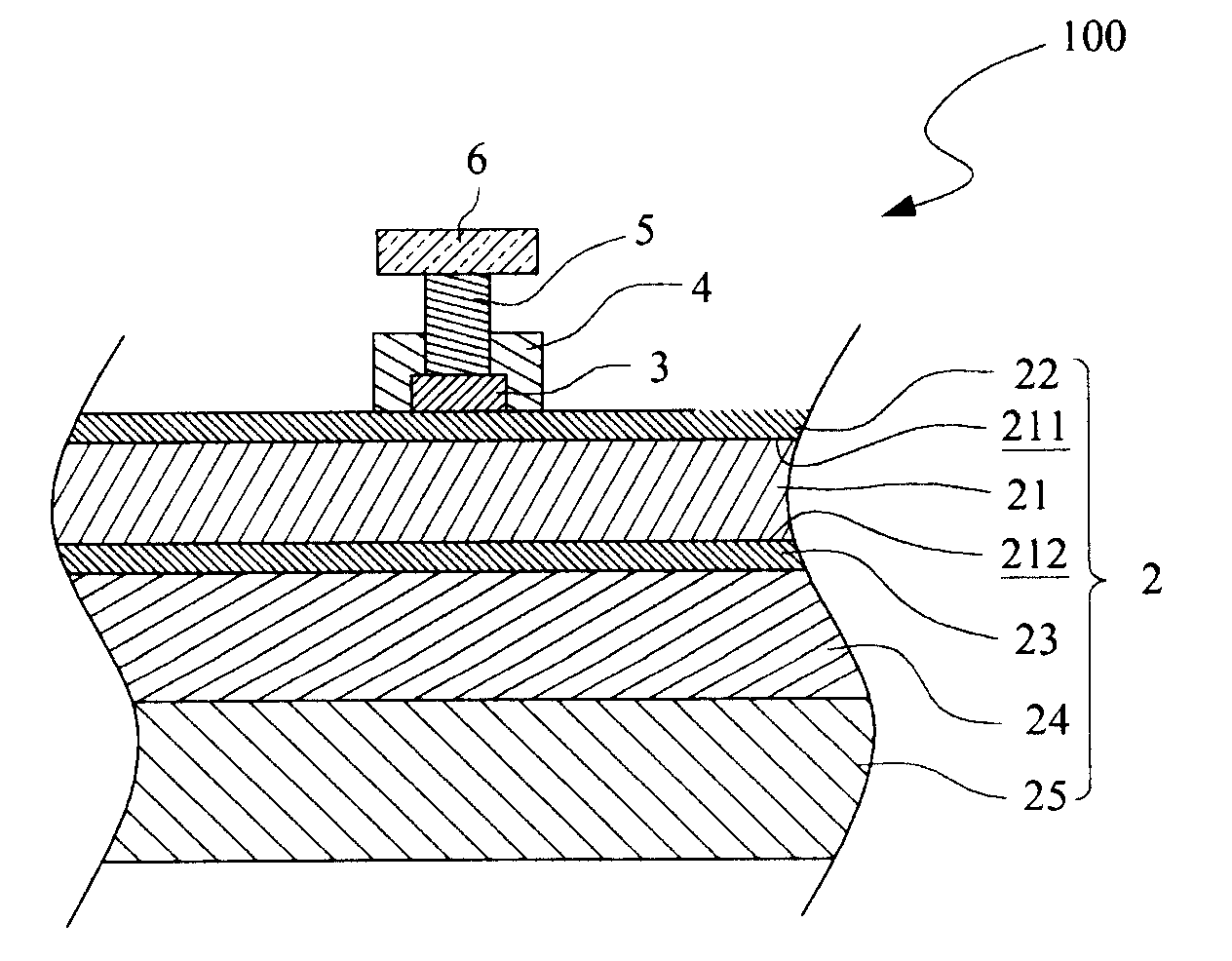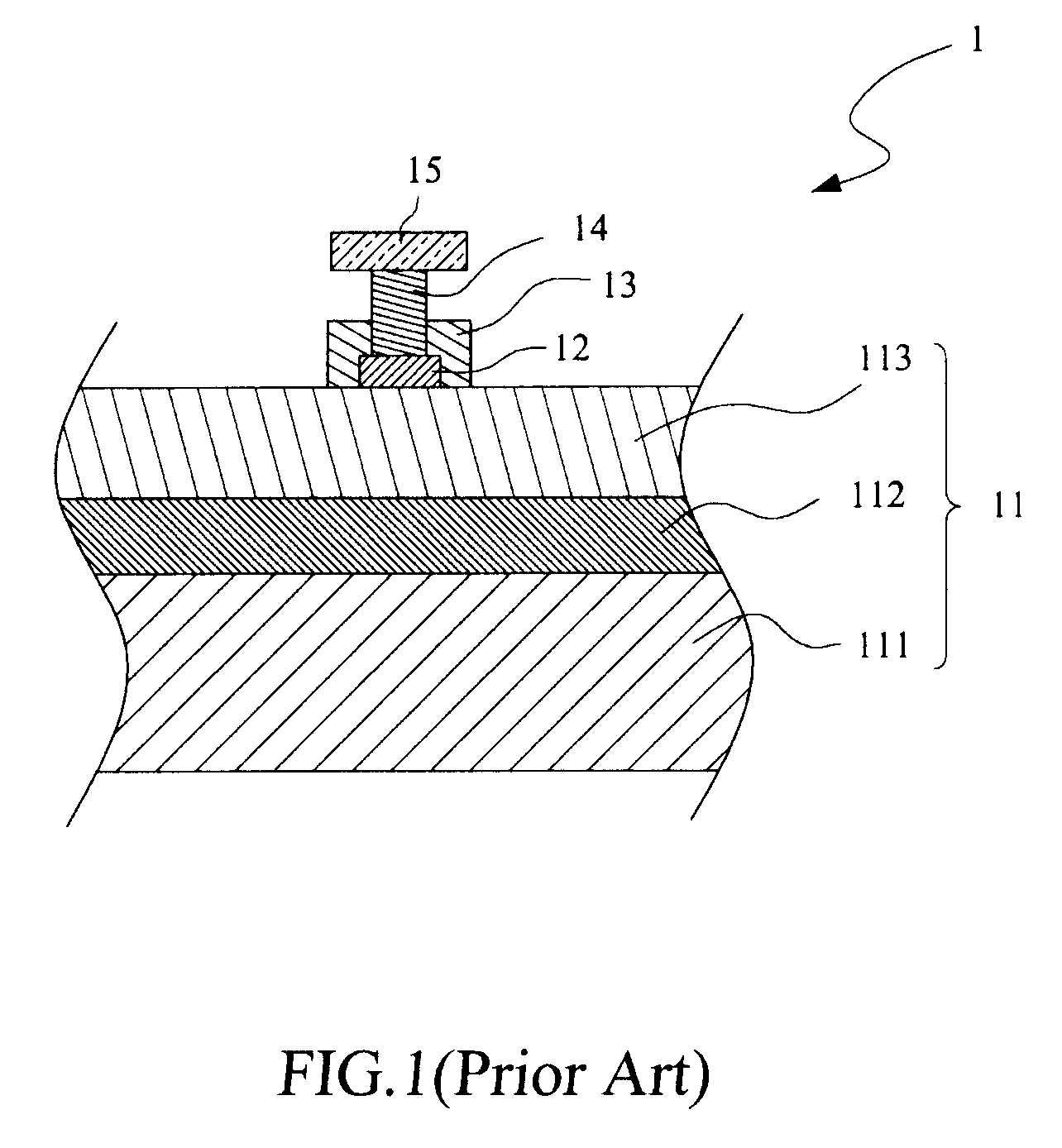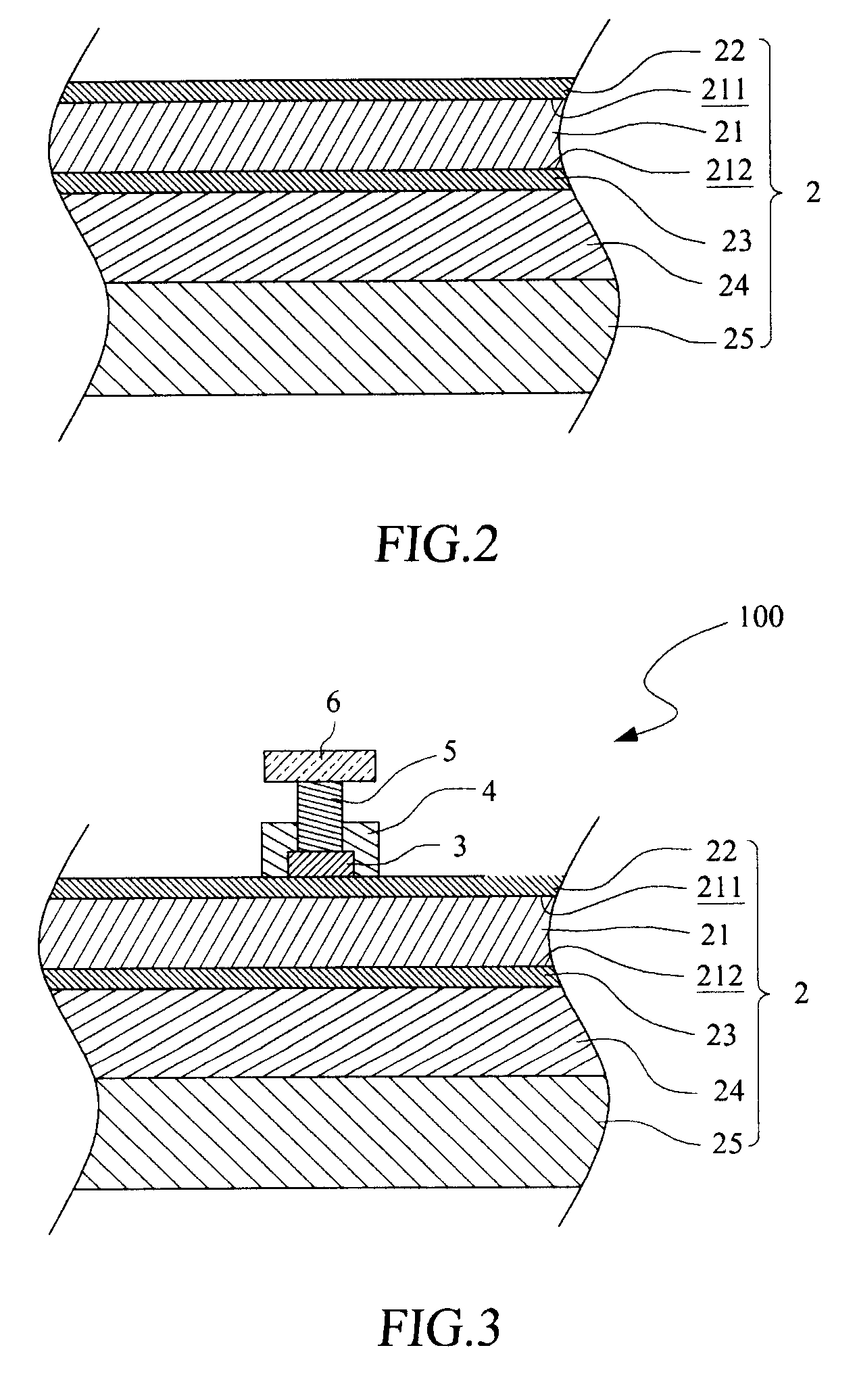Structure and manufacturing method of substrate board
a manufacturing method and substrate technology, applied in the direction of resistive material coating, semiconductor/solid-state device details, superimposed coating process, etc., can solve the problems of generating great the variation of heat expansion coefficient between the substrate layer, the heat expansion coefficient between the electrical isolation layer and the heat conduction and electrical isolation layer, etc., to achieve the effect of reducing residual thermal stress within the substrate board, increasing the yield rate of substra
- Summary
- Abstract
- Description
- Claims
- Application Information
AI Technical Summary
Benefits of technology
Problems solved by technology
Method used
Image
Examples
first embodiment
[0033]Preferably, in the first embodiment, the second anodic treatment layer 23 and the heat conduction and electrical isolation layer 24 are respectively composed of the metallic oxide and a metallic nitride of the same metal. For example, the first anodic treatment layer 22 and the second anodic treatment layer 23 can be composed of aluminum oxide (Al2O3); the heat conduction and electrical isolation layer 24 is composed of aluminum nitride (AlN). Obviously, under this condition, the heat conduction and electrical isolation layer 24 can be well bonded with the second anodic treatment layer 23.
[0034]Moreover, when the substrate layer 21 is made of aluminum, the first anodic treatment layer 22 and the second anodic treatment layer 23 are composed of aluminum oxide (Al2O3), the heat conduction and electrical isolation layer 24 is composed of aluminum nitride (AlN), the heat expansion coefficients of the mentioned structural layers are actually measured as follows: the heat expansion ...
second embodiment
[0048]Please refer to FIG. 6, which illustrates a simplified flowchart of manufacturing the substrate board in accordance with the present invention. At the same time, please refer to FIG. 4 and FIG. 5. The method for manufacturing the substrate board 2a comprises the steps as follows. First, provide a substrate layer 21 having the arrangement surface 211 and the heat-dissipating surface 212 (step 110), and execute an anodic treatment to the substrate layer 21, so as to form the first anodic treatment layer 22 and the second anodic treatment layer 23 respectively on the arrangement surface 211 and the heat-dissipating surface 212 (step 120).
[0049]Following up, execute a vacuum-sputter treatment, a plasma vapor deposition (PVD) treatment, a chemical vapor deposition (CVD) treatment, or an ion implantation treatment, so as to form the heat conduction and electrical isolation layer 24 on the second anodic treatment layer 23 (step 130).
[0050]Hereafter, execute a plasma-enhanced chemical...
PUM
| Property | Measurement | Unit |
|---|---|---|
| current | aaaaa | aaaaa |
| current | aaaaa | aaaaa |
| wavelength | aaaaa | aaaaa |
Abstract
Description
Claims
Application Information
 Login to View More
Login to View More - R&D
- Intellectual Property
- Life Sciences
- Materials
- Tech Scout
- Unparalleled Data Quality
- Higher Quality Content
- 60% Fewer Hallucinations
Browse by: Latest US Patents, China's latest patents, Technical Efficacy Thesaurus, Application Domain, Technology Topic, Popular Technical Reports.
© 2025 PatSnap. All rights reserved.Legal|Privacy policy|Modern Slavery Act Transparency Statement|Sitemap|About US| Contact US: help@patsnap.com



